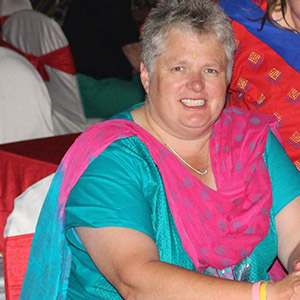Turning the tide on stroke in Tasmania
Stroke Foundation is calling on the next Tasmanian state government to build on the work that has been done in stroke treatment and care by investing in action that will save lives.
Four key proposals have been outlined in the Stroke Foundation election platform Turning the Tide on Stroke, including the implementation of a ‘Living Well in Our Community Program’. This program would reduce the number of strokes in Tasmania, and the number of survivors who go on to experience a subsequent stroke.
Stroke Foundation Tasmania State Manager Eamonn O’Toole said more than 80 percent of strokes can be prevented and this program would enable stroke risk to be detected early. It would also support behaviour change to reduce risks.
“It’s never been more important to invest in the prevention of stroke in Tasmania," Mr O’Toole said.
“This state has the highest per capita incidence of first stroke nationally, which has a significant impact on the community, health system and economy.
"Last year more than 660 people in Tasmania experienced a stroke for the first time and there were more than 11,000 survivors of stroke living in our community. We must do more to turn the tide.”
Stroke strikes the brain and can change lives in an instant.
Montrose resident Anita Kerrison experienced a stroke in 2019. It came as a huge shock and impacted Anita’s ability to work in a job she loved. It took a supportive team of health professionals and a great deal of determination from Anita to recover and return to work six months later. Anita’s stroke was caused by high blood pressure, a key modifiable risk factor for stroke.
“I had no idea I was living with high blood pressure,” Anita said.
“But now, I make sure it is under control and I adhere to a healthy lifestyle to avoid having another stroke.”
“I have been given a second chance at life and I am not going to waste it,” she said.
In addition to the Living Well in Our Community Program, Stroke Foundation is proposing these key actions to help Tasmanians survive and thrive after stroke:
• Deliver a F.A.S.T. multimedia education campaign.
• Support the world-leading Living Evidence initiative.
• Deliver a dedicated stroke unit at three major Tasmanian public hospitals.
Stroke Foundation has acknowledged state government investment in recent years in a number of programs - StrokeConnect, F.A.S.T. community education, StrokeLink Community of Practice and Stroke Outreach Program (StOP) - had made a real difference.
Eamonn O’Toole said it had highlighted what could be achieved.
“It is now time to take the next step in combatting Tasmania’s stroke challenge.
“The next state government has an opportunity to build on this significant work to ensure all Tasmanians have the chance to prevent stroke, survive and recover well".
Stroke statistics in Tasmania
• More than 660 first time strokes in 2020.
• More than 11,000 stroke survivors are living in the community.
• 116,100 residents are living with high blood pressure.
• 51,000 residents are living with high cholesterol.
• 306,000 residents are living with overweight and obesity.
• 67,000 residents are smokers.
• 80,700 people are physically inactive.

Image: Survivor of stroke Anita Kerrison did not know she had high blood pressure when she had a stroke
